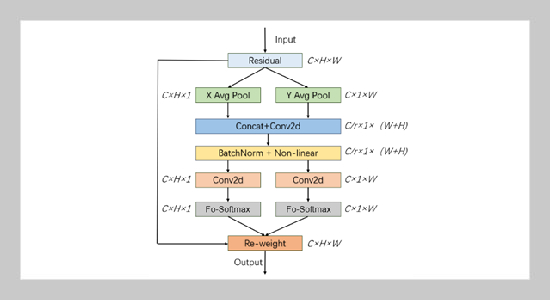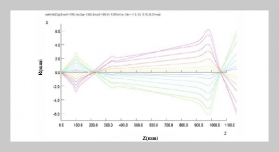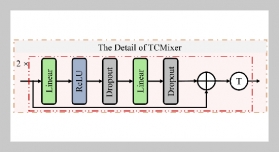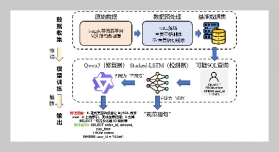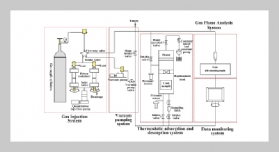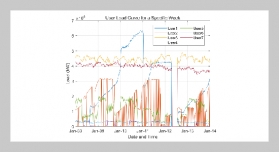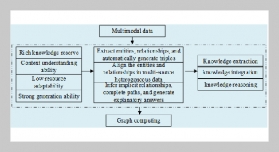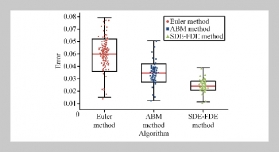- [1] L. Shi and X. Di, (2023) “A recognition method of learn�ing behaviour in English online classroom based on feature data mining" International Journal of Reasoning�based Intelligent Systems 15: 8–14. DOI: 10.1504/IJRIS.2023.128375.
- [2] T. Guo, X. Bai, X. Tian, S. Firmin, and F. Xia, (2022) “Educational anomaly analytics: features, methods, and challenges" Frontiers in big Data 4: 811840. DOI: 10.3389/fdata.2021.811840.
- [3] Y. Liu, H. Chen, and A. Thoff, (2020) “Research on evaluation method of students’ classroom performance based on artificial intelligence" International Journal of Continuing Engineering Education and Life Long Learning 30: 476–491. DOI: 10.1504/IJCEELL.2020. 110925.
- [4] Y. Xie, S. Zhang, and Y. Liu, (2021) “Abnormal Behav�ior Recognition in Classroom Pose Estimation of College Students Based on Spatiotemporal Representation Learn�ing" Traitement du Signal 38: 89–95. DOI: 10.18280/ ts.380109.
- [5] X. Zhang, (2022) “A Gaussian High-Dimensional Ran�dom Matrix-Based Method for Detecting Abnormal Stu�dent Behaviour in Chinese Language Classrooms" Mathe�matical Problems in Engineering 2022: 6957097. DOI: 10.1155/2022/6957097.
- [6] S. Zhang, H. Liu, C. Sun, X. Wu, P. Wen, F. Yu, and J. Zhang, (2023) “MSTA-SlowFast: A student behavior detector for classroom environments" Sensors 23: 5205. DOI: 10.3390/s23115205.
- [7] M. A. E. Abbas and S. Hameed, (2022) “A System�atic Review of Deep Learning Based Online Exam Proc�toring Systems for Abnormal Student Behaviour Detec�tion" International Journal of Scientific Research in Science, Engineering and Technology 9: 192. DOI: 10.32628/IJSRSET229428.
- [8] C. Pabba and P. Kumar, (2022) “An intelligent system for monitoring students’ engagement in large classroom teaching through facial expression recognition" Expert Systems 39: e12839. DOI: 10.1111/exsy.12839.
- [9] J. Zhang, Z. Zhang, L. Guan, and H. Hu. Research on Classroom Behavior Recognition and Detection Method Based on Deep Learning. 2024. DOI: 10.1109/cvidl62147.2024.10604092.
- [10] J. Redmon, S. Divvala, R. Girshick, and A. Farhadi. “You only look once: Unified, real-time object detec�tion”. In: Proceedings of the IEEE conference on com�puter vision and pattern recognition. 2015, 779–788. DOI: 10.48550/arXiv.1506.02640.
- [11] J. Redmon and A. Farhadi. “YOLO9000: better, faster, stronger”. In: Proceedings of the IEEE conference on computer vision and pattern recognition. 2017, 7263–7271. DOI: 10.1109/CVPR.2017.690.
- [12] L. Tang, T. Xie, Y. Yang, and H. Wang, (2022) “Class�room behavior detection based on improved YOLOv5 algo�rithm combining multi-scale feature fusion and attention mechanism" Applied Sciences 12: 6790. DOI: 10.3390/app12136790.
- [13] J. Wen, Y. Qin, and S. Hu. “Abnormal behavior iden�tification of examinees based on improved YOLOv5”. In: International Conference on Computer Graphics, Arti�ficial Intelligence, and Data Processing (ICCAID 2022). 12604. 2022, 946–953. DOI: 10.1117/12.2674630.
- [14] Z. Zhang, D. Ao, L. Zhou, X. Yuan, and M. Luo. “Laboratory behavior detection method based on im�proved Yolov5 model”. In: 2021 International Confer�ence on Cyber-Physical Social Intelligence (ICCSI). 2021, 1–6. DOI: 10.1109/ICCSI53130.2021.9736251.
- [15] F. Lei, F. Tang, and S. Li, (2022) “Underwater target detection algorithm based on improved YOLOv5" Jour�nal of Marine Science and Engineering 10: 310. DOI: 10.3390/jmse10030310.
- [16] R. Girshick, J. Donahue, T. Darrell, and J. Malik. “Rich feature hierarchies for accurate object detection and semantic segmentation”. In: Proceedings of the IEEE conference on computer vision and pattern recognition. 2014, 580–587. DOI: 10.1109/CVPR.2014.81.
- [17] Q. Zheng, M. Yang, X. Tian, X. Wang, and D. Wang, (2020) “Rethinking the Role of Activation Functions in Deep Convolutional Neural Networks for Image Classifi�cation" engineering letters 28: 80.
- [18] J. Bai, J. Dai, Z. Wang, and S. Yang, (2022) “A detection method of the rescue targets in the marine casualty based on improved YOLOv5s" Frontiers in Neurorobotics 16: DOI: 10.3389/fnbot.2022.1053124.
- [19] C. Chen, F. Wang, Y. Cai, S. Yi, and B. Zhang, (2023) “An improved YOLOv5s-based Agaricus bisporus detec�tion algorithm" Agronomy 13: 1871. DOI: 10.3390/ agronomy13071871.
- [20] M. Gong, D. Wang, X. Zhao, H. Guo, D. Luo, and M. Song. “A review of non-maximum suppression algorithms for deep learning target detection”. In: Seventh Symposium on Novel Photoelectronic Detection Technology and Applications. 11763. SPIE, 2021, 821–828.
- [21] H. Li, J. Li, H. Wei, Z. Liu, Z. Zhan, and Q. Ren, (2022) “Slim-neck by GSConv: A better design paradigm of detector architectures for autonomous vehicles" arXiv: DOI: 10.48550/arXiv.2206.02424.
- [22] Q. Hou, D. Zhou, and J. Feng. “Coordinate atten�tion for efficient mobile network design”. In: Pro�ceedings of the IEEE/CVF conference on computer vi�sion and pattern recognition. 2021, 13713–13722. DOI: 10.1109/CVPR46437.2021.01350.
- [23] Z. Zheng, P. Wang, W. Liu, J. Li, R. Ye, and D. Ren. “Distance-IoU loss: Faster and better learning for bounding box regression”. In: Proceedings of the AAAI conference on artificial intelligence. 34. 07. 2020, 12993–13000. DOI: 10.1609/aaai.v34i07.6999.
- [24] Y.-F. Zhang, W. Ren, Z. Zhang, Z. Jia, L. Wang, and T. Tan, (2022) “Focal and efficient IOU loss for accurate bounding box regression" Neurocomputing 506: 146– 157. DOI: 10.48550/arXiv.2101.08158.
- [25] Z. Y. Khan and Z. Niu, (2021) “CNN with depthwise separable convolutions and combined kernels for rating prediction" Expert Systems with Applications 170: 114528. DOI: 10.1016/j.eswa.2020.114528.
- [26] H. Srivastava and K. Sarawadekar. “A depthwise separable convolution architecture for CNN accelera�tor”. In: 2020 IEEE Applied Signal Processing Conference (ASPCON). 2020, 1–5. DOI: 10.1109/ASPCON49795.2020.9276672.
- [27] R. Girshick. “Fast r-cnn”. In: Proceedings of the IEEE international conference on computer vision. 2015, 1440– 1448. DOI: 10.1109/ICCV.2015.1691.
- [28] S. Ren, K. He, R. Girshick, and J. Sun, (2016) “Faster R-CNN: Towards real-time object detection with region proposal networks" IEEE transactions on pattern anal�ysis and machine intelligence 39: 1137–1149. DOI: 10.1109/TPAMI.2016.2577031.
- [29] J. Redmon and A. Farhadi, (2018) “YOLOv3: An In�cremental Improvement" ArXiv abs/1804.02767: DOI: 10.48550/arXiv.1804.02767.
- [30] W. Liu, D. Anguelov, D. Erhan, C. Szegedy, S. Reed, C.-Y. Fu, and A. C. Berg. “Ssd: Single shot multibox detector”. In: Computer Vision–ECCV 2016: 14th Euro�pean Conference, Amsterdam, The Netherlands, October 11–14, 2016, Proceedings, Part I 14. 2016, 21–37. DOI: 10.48550/arXiv.1512.02325.


